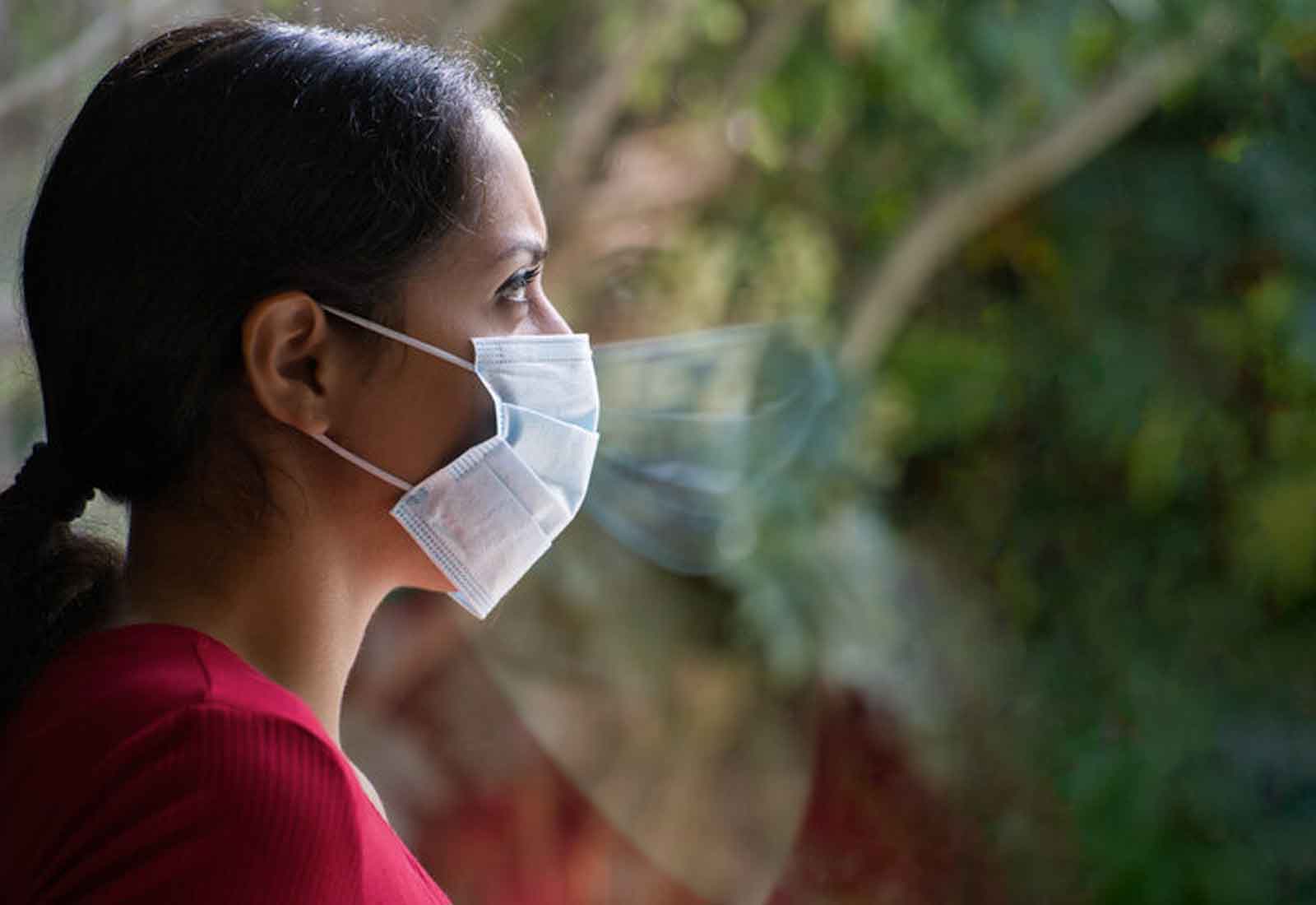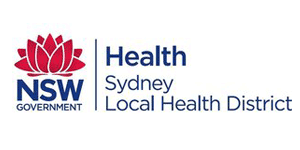The Woolcock Institute of Medical Research

How to isolate an infected person at home
We are now five months into a coronavirus pandemic and there is no certainty of how this will play out over time.
While community prevalence in most Australian states is low, the virus has shown itself to be capable of explosive bursts, partly via spread from asymptomatic cases. Both quarantine (that is, staying alone at home because you have potentially been exposed) and isolation (that is, you have COVID-19 and must not have any form of contact capable of infecting others) require strategies which can be put in place immediately.
It is important to be capable of immediate self-isolating within the home, in order to block the rapid and often silent spread into the community. In this evolving situation, you should check the website of your state health department for up-to-date on advice on diagnostic testing and disease management in the home (e.g. NSW Health guidelines can be found here).
Providing the symptoms are mild, it is prudent to care for someone with COVID-19 at home. The infection risk to the carer and other family members can be reduced following simple guidelines.
Three things are important:
Start isolation immediately, as an infected person is most likely to spread infection in the two days prior to any symptoms and in the following week.
Isolation must be done rigorously, as SARS-CoV-2 can be very contagious.
Be prepared; know what to do and have basic items already available at home.
The first symptoms vary between people and can be similar to cold or the flu. These include: fever (above 37.3° C), cough, a feeling of being unwell or exhausted. Many other symptoms can occur and 20- 40% of people do not have symptoms but are still infectious.
Coronavirus is thought to spread between people in multiple different ways:
Contact with contaminated surfaces or hands. Virus picked up by touching surfaces or by shaking hands is transferred to mucus membranes of the face (eyes, nose or lips), passing on the infection. An infected person will have virus on their hands after blowing or wiping their nose, or they can transfer virus to surfaces by coughing or talking which creates droplets of mucus or saliva which settle onto the surfaces. High-touch surfaces in the home or workplace can be contaminated, including table tops, door handles, phones, keyboards, light switches, toys, bedding etc.
Large droplets sprayed out while coughing and talking can be directly inhaled by a person or sprayed onto the person. This requires close contact between people. Once generated these droplets are generally considered to only remain airborne for a few minutes at most, during which time they can be inhaled from the air, after that, large particles settle onto surfaces, contaminating them. They probably only travel a few metres or less in that time.
Very small droplets (termed aerosols). These are generated when speaking, coughing, singing or even breathing. Such aerosols behave more like smoke than a spray and can transmit infection over both short distances and also over longer distances as they stay airborne and can travel many metres with airstreams. The proportion of transmission that occurs via aerosols is currently uncertain, but is the most likely explanation for “super-spreader events” where many people in a room become infected without close contact.
Faecal-oral route. This method of transmission is also possible (although probably uncommon) as some COVID-19 patients have large amounts of this virus in their stools, especially if they have diarrhoea. Droplets or aerosols containing virus can be generated by toilet flushing, which creates a spray from the water and faeces. There were cases of SARS coronavirus spread by this route in Hong Kong during the 2003 outbreak. In a recent COVID-19 report, a hospital bathroom used by an infected patient had virus detected all over the fittings and walls.
All these routes can be important at different times and circumstances. Addressing all routes is necessary to minimise infection and spread.
If someone in your home is suspected of having COVID-19 they should be isolated immediately. This means they should remain in a room alone, door closed and if possible have their own bathroom. They will have to eat, sleep and generally carry on life in this room. Food should be left at their door (knock and leave). Afterwards, the plates and utensils should be treated as infectious and put through the dishwasher. They should not be allowed in any other rooms of the house, or outside the house other than to a backyard or a well ventilated balcony and they should maintain a distance of at least 2m at all times from other people. In this case, both parties should be wearing masks and the infected person should turn away to cough. If some physical contact is required in the home, for example when caring for children, keep contact to the minimum, wash hands afterwards, clean surfaces with diluted bleach and keep windows open if possible. Pets should not be allowed in the person’s room as, in theory, they may transport virus on their fur and there are very rare cases of household pets contracting coronavirus. If there is only one bathroom, the window should be left open at all times to maximise ventilation of this space.
These guidelines are written on the presumption of adults in a nuclear family. Many millions of Australians live singly or in other domestic arrangements and will have to adapt this advice to their situations. In some situations, it would be preferable for one family member to be the designated carer, in order to limit the risk of wider transmission. If two parents are infected and children are sent to others for temporary care (because the children may be infected but not showing symptoms but still transmit disease), it is better if at all possible to send children to a young adult and not grandparents who are at greater risk.
The whole family should consider themselves to be under lockdown, because there is a risk that other family members have already become infected but not be showing symptoms. A person can become infectious, at one or even perhaps two days, before they start to show symptoms. Symptoms usually appear 5-6 days after infection, but this can be up to 12-14 days later. Thus the whole family should not go out of the house. This will require a range of wide range of support; food supplies, medical, and other support for at least a week.
No doubt this is very challenging in a world where we are all used to a high level of socialising and mobility. But the isolation of entire families was one of the successful strategies practiced during the “Spanish flu” pandemic in 1919, when Australia had one of the lowest infection rates in the world. It is also a key to successful approaches in Asian countries who have a collective social memory of SARS. If the infected person is moved to medical facilities, the house is still potentially contaminated for 4-7 days.
MINIMISING THE RISK OF INFECTION
Minimising the transmission of the virus within the home means addressing all the known routes. Studies of effective approaches in hospitals during the SARS (a different coronavirus) pandemic are instructive and are used as the basis for approaches at home. These approaches were: the use of mask or respirator, wearing gowns, thorough cleaning of surfaces, wearing gloves and handwashing at least 10 times per day. While each had some effect, a combination of them was most effective. Among healthcare workers, N95 respirators were more effective than surgical masks – but this probably reflects the very high exposure situations involved.
Masks and respirators (P2)
Surgical masks were originally designed to prevent doctors infecting their patients. They come in a wide variety of shapes and are held on with loops around ears or tie at the back. They do not seal tightly to the face and are more comfortable to wear for long periods. They are good for filtration of large droplets and less useful for filtering small aerosols. They operate both to protect the person wearing them from exposure, and also help prevent the transmission of virus from an infected person.
Some studies of infection rates for health care workers for other viruses do not show differences in protection between wearing surgical masks and P2 respirators, other studies favour P2 respirators.
Respirators (called P2 in Australia, N95 in the US and FFP2 in Europe) are made with a thicker filter and are standardised to provide very good protection against inhaling small aerosols. However, to work properly the mask needs to seal tightly to the face, or it will leak, particularly around the nose and chin. It is very important to closely follow instructions for use on the packaging. No design of respirator fits 100% of face shapes. More than two days’ beard growth can be enough to cause leakage. P2 can become quite uncomfortable on extended wear (headaches, itchy faces, rash or other problems). Some respirators have a valve to make exhaling easier – these should not be worn by an infected person. If P2 are not available, P1, which are slightly less effective, are an option. P2 should be reserved for high-exposure situations.
The normal advice has been that respirators are single-use with a limited life, 6-8 hours. However, in emergencies and shortages they can be reused until they fail in some way, get hard to breathe through, or visibly deteriorate. Remember: don’t swap respirators with people or write your initials on them, and once used, the outside is contaminated with virus so only hold by the straps and wash hands as if infected after putting on and taking off. At home it is not easy to clean or sterilise masks and respirators without damaging the electrostatic cloth filter; steam is possibly best, but this is not validated. Most commercial masks cannot be washed with soap, detergent or alcohol-based hand wash as this destroys the properties of the filter.
If surgical masks or respirators are not available, it is possible to make your own mask from several layers of cotton, gauze or dry electrostatic wipes. In most cases homemade cloth masks are not as good as surgical masks in terms of filtration of small particles, but they will capture larger droplets. Something is better than nothing. There are many examples of how to make these on the web.
Wearing gowns: In a hospital context, medical staff would put on a gown before entering the room and remove it on leaving and then washing their hands. You will have to use your imagination here, perhaps a cotton coat, slippers or thongs and a headscarf that can be easily laundered as it will become contaminated. Use only for this purpose and preferably store in an enclosed space close to the entry door.
Thorough cleaning: Laboratory studies show that this coronavirus can be infectious for up to three days on plastic and stainless steel and up to one day on cardboard or paper. However, viruses can be more stable in human mucus than buffers as used here, and stability also changes with temperature and humidity, so longer times may apply. If possible, flat, frequently touched surfaces in the room should be cleaned regularly. The WHO recommends cleaning with soap (or detergent) and water and then decontaminating with an agent such as bleach; advice varies from 1:35 to 1:100 dilution of 5% sodium hypochlorite, 0.5% hydrogen peroxide solution or 70% alcohol solution.
If the infected person moves from their room to the bathroom, afterwards decontaminate surfaces that have been touched on the way and in the bathroom.
Wearing gloves: It is normal in infection control to use disposable gloves when handling any potentially infectious material and reduce virus transfer and exposure. If not available, use washing-up gloves. Treat the outside of the gloves as potentially contaminated after using, requiring disposal or cleaning with soap and water or disinfectant. There is a low risk of allergy from prolonged use of latex examination gloves, and there are many PVC, nitrile, vinyl or powder-free latex alternatives.
Frequent hand washing: In the case of influenza and colds, hand washing at least 10 times per day typically provides around 20% reduction of disease transmission, and this effect is likely to be greater for coronavirus. However, while hand washing might prevent individual infections, it will not stop all spread through a community as there are multiple routes of infection. Handwashing should be done with soap or detergent and warm water and should be for at least 20 seconds each time using vigorous hand-to-hand action. It takes this amount of time for the soap molecules to loosen the grip of the virus on the skin and penetrate the coat of the virus. Dry your hands on a clean paper towel.
It’s probably wise to use a hand cream or moisturiser after washing to replace lost oils as such frequent washing can lead to skin problems. Handwashing should be performed after any possible exposure to contamination, visiting the person or shared bathroom, handling objects they have handled, before preparing foods, after mask removal, and in many other situations; you will have to use common sense based on activities.
There is no advantage in using specialised “antibacterial” or medicated soap.
If soap and water is not available, alcohol sanitiser is a good alternative. This should contain around 70% alcohol to be effective. There are some incorrect articles on the web about making your own alcohol sanitiser. If you absolutely must, then at least take the advice of the WHO site.
Handling contaminated material: Because the infected person will be generating virus aerosols through coughing, talking and blowing their nose at least, it is important that any contaminated items are safely collected and disposed of, including masks and tissues.
Tissues should be immediately put in a lined container and disposed of in the garbage. If no tissues are available, use soft toilet paper and flush down the toilet, or bag and put in garbage. The infected person should wash their hands in warm soapy water or use an alcohol sanitiser after each handling of tissues.
Infection control practices in hospitals would use regular changes and laundry of bedding and clothing to remove virus on these surfaces. This should definitely be done if there is any soiling of clothing and bedding. Wear a mask and gloves while handling contaminated clothing and bedding in a plastic bag. Laundry with normal detergent on hot wash cycle is effective at removing virus; dry in the sun or on the hottest setting that can be used with the items. Preferably wash at home, not a laundromat.
Increase ventilation: Open windows in all rooms as frequently as possible. There are numerous studies showing lower rates of virus and bacterial transmission in well-ventilated hospital wards, dormitories and houses. It’s likely that good circulation of outside air flushes out the important droplets and aerosols as well as providing cleaner air for anyone else present in the room.
Eye protection: There is some data that some viruses at least, can enter the body via droplets sprayed into the eyes, as well as by wiping fingers on the eyes. In hospitals, some form of goggles or eye shields are frequently used. It would seem prudent to find an equivalent, like wrap-around sunnies or goggles when direct exposure to an infectious person was likely.
Visiting the room: It may sound harsh, but, where practical, members of a family should avoid all direct contact with an infectious person, that is, being in the same room. This also applies to home visitors as much as possible. If people do want to talk and socialise at home, this should be done outside the house in the backyard or on an open balcony, maintaining a 2m distance between people and both wearing masks. Sit upwind of the infected person; droplets can travel in plumes.
These restrictions could be distressing and a challenge to family dynamics and it will raise anxiety for everyone. It means the infectious person will have to eat alone and only be visited in situations where the visitor is directly providing necessary care. Talk through a window, and communicate using phone calls and other digital methods, it is important to keep a close observation of the person, and keep their spirits up and provide reassurance. Remember any items that have been in the room, books, furniture, eating utensils etc, will potentially carry virus and could be a source of infection for a few days afterwards.
Any person entering the room should have a mask and should wash their hands, or use an alcohol-based sanitiser immediately on leaving.
Sleep and rest: Getting a lot of sleep is important, as is extended rest and not returning to any strenuous activity or stress for an extended period. The body is vulnerable to additional infections and needs time to heal properly.
Diet: There are many articles in the popular press about boosting your immune system or particular foods with health-giving properties. There is not much in the medical literature about this, other than the obvious advice about the extra importance of a healthy well-balanced diet at times like this. At least for colds, there was an interesting study of the benefits of chicken soup. If you live by yourself, make a plan for a friend, Meals on Wheels or use an online shopping service to deliver food and other necessities to your door while you are isolation.
How long for: People with confirmed coronavirus infection should remain under home isolation precautions until the risk of secondary transmission to others is thought to be low. This could be two to three weeks. The decision to discontinue home isolation precautions should be made on a case-by-case basis, in consultation with your doctor or whoever is providing professional advice.
Summary
The infected person is a mini virus factory, shedding virus into the air and onto surfaces.
They need to be isolated as much as possible within the house.
If at all possible they should have their own bathroom. If not, the bathroom should be well ventilated after use, and the surfaces should be considered as contaminated.
Surfaces, including floors, where possible need to be routinely cleaned with water and detergent or other cleaning solution (and then decontaminated with an agent such as freshly prepared diluted household bleach.
Wash your hands regularly and thoroughly (20 seconds with soap and water or 70%-based alcohol based sanitiser), particularly after being in the room of an infectious person or handling anything they may have touched.
Wear disposable or washable gloves whenever handling items that may carry virus to limit spread and also when using cleaning agents to protect your hands from harsh chemicals.
If mixing is needed, both the infected person and others present must wear masks.
Good ventilation of the room is important as it flushes out large and small airborne droplets and provides clean air. Leave windows open as much as practical.
Get plenty of rest and sleep, eat well and plan for a better future.
Finally, support medical research and evidenced-based experts, not what anyone says on the web. We have had five near-miss respiratory viral epidemics in the last 20 years, it will happen again, there is a lot to learn, so start planning now.
Shopping and action list
Disposable gloves, or failing that, dishwashing gloves
If available, disposable surgical masks, P2 respirators (if not available, P1)
Bleach, cleaning detergent and disinfectant, bucket and mop, cleaning cloths
Laundry liquid
Tissues
Thermometer to check temperatures
Hand moisturiser
Soap for handwashing
A plan to provide food, medical communication and other necessities for three weeks
Discussing with family and friends and agreeing to check on each other regularly
A plan for dealing with the boredom, stress and anxiety of isolation – think about positive ways to encourage compliance.
Euan Tovey is an associate professor, honorary affiliate senior research fellow at the Woolcock Institute of Medical Research, University of Sydney, with special interests in virus transmission and sampling biological aerosols.
Sacha Stelzer-Braid is a senior postdoctoral scientist in the Virology Research Lab at the University of NSW/Prince of Wales Hospital with special interests in surveillance of enteroviruses, and the transmission and role of respiratory viruses in chronic airways disease.
This piece was first published at medicalrepublic.com.au.










